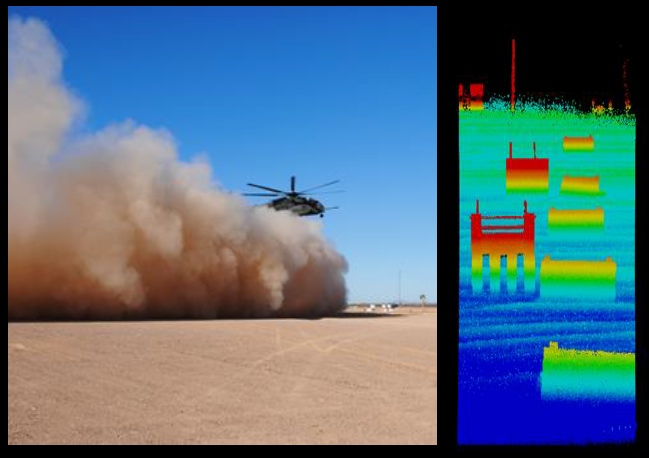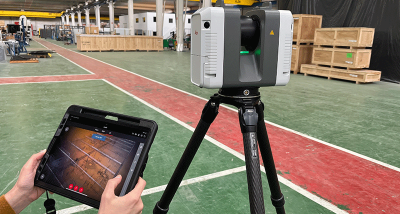Note on images: All images in this article are copyright images owned by Blackmore Sensors & Analytics used with the approval of the company. It is not appropriate for others to use these images or publish them in any manner without the written approval from Blackmore Sensors & Analytics. For more information, refer to www.blackmoreinc.com
Montana-based Blackmore Sensors and Analytics has received $3.5 million in Series A funding to miniaturize its unique lidar sensors. The company says its technology can offer UAVs and autonomous cars a much more sophisticated understanding of their environments than existing solutions.
According to Blackmore president Randy Reibel, the sensors set themselves apart by using frequency modulation rather than amplitude modulation.
What does that matter? Reibel told me to think of AM radio (which is modulated by amplitude) and FM radio (which is modulated by frequency). With AM radio, you have to turn up the sensitivity of the receiver, which means that it will be set off more easily and produce more noise. FM radio doesn’t require the receiver to be cranked up, so it produces a cleaner signal.
Reibel says the challenge in making an FM lidar is that the systems suffer from Doppler shifts.
This is because an FM system sends out lasers of different wavelengths, or colors. When a stationary object reflects one of those lasers, the wavelength is unchanged and the receiver can easily extract range information. However, if that object is moving, the object will cause a Doppler shift—a change in the wavelength of the laser it reflects back. Now, the returning laser contains information about both the object’s range and its velocity—unfortunately they’re entangled and difficult for the receiver to extract.

Doppler shifts can show whether an object is moving toward or away from an observer. Image copyright Blackmore Sensors & Analytics.
To make FM work, Reibel says Blackmore developed a system that pulled apart the range and velocity information. Then they spent years proving the technology on mission-critical defense applications.
By supplying velocity information, Blackmore’s lidar can help an autonomous vehicle understand a lot more about its environment. For instance, now it can sense if the car in front of it is going the same speed, or if it’s traveling faster. More importantly, it can know instantaneously when that car stops and prevent you from running into the back of it.

Blackmore’s lidar allows for easy filtering of fog, rain, snow, and dust. Image copyright Blackmore Sensors & Analytics
Reibel tells me that Blackmore’s sensors offer other benefits as well. They operate a lower sensitivity, so they aren’t overwhelmed by sunlight. The way they process returns filters out the lasers emitted by other systems, meaning their sensors won’t be blinded by other lidar sensors on the road. He says the sensors can see twice as far as comparable solutions, and offer more flexibility, like measuring fast when the object is close or slowing down the measurements for more accurate information on far away objects.
Blackmore is already developing some powerful analytics that make use of this velocity information. They can already filter obscurants like rain, fog, dust, and snow by throwing away points with certain doppler signatures. They can also use this information to perform target identification, for instance to decide very quickly whether an object is a moving person or a stationary post.
The company is using their $3.5 million to develop a solid-state, miniaturized version of their technology for a forward-looking sensor. But they’re also putting a lot of effort into developing their analytics to an even higher level of sophistication. As margins shrink, and making sensors that gather 3D data becomes less profitable, that’s where the edge lies. For as long as Blackmore’s lidar is gathering data that no one else can, they have a head start on the game.







